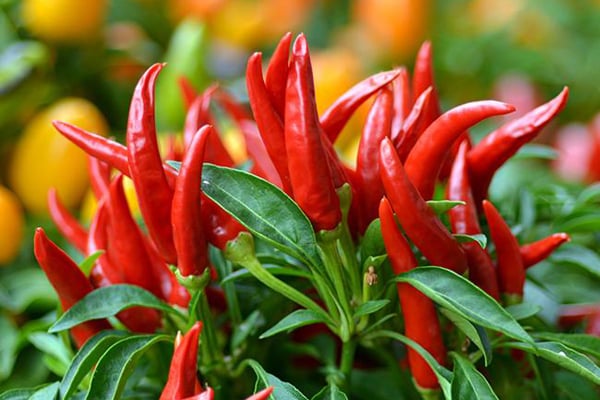Prime
Guide for planting red chili

What do I need to start African birds eye chili farming? Andrew .
Dear Andrew
African bird’s eye chili is one of the hottest and pungent chilies in the world. Known by the scientific name, capsicum frutescens, the African bird’s eye chili originated from Mexico and was introduced to the world by Portuguese and Spanish colonialists, traders and missionaries. Something interesting about the African bird’s eye chili is the pungency or “hotness” depends on the climate where it is grown, with some countries producing more pungent African bird’s eye chilies than others.
Planning
You need to plan well when venturing into African bird’s eye chili farming. The first thing you need to be sure of is the market. Who will buy your chili after harvesting? Do you plan to do value addition? Do you have a contract with a buyer? Are you planting African bird’s eye chilies for export or for local production? Answering these questions will help you plan how much chili to plant.
The second thing is you need to plan for the labour required, especially during harvesting. Harvesting African bird’s eye chilli is labour intensive and can irritate the labourers because of its pungency. You should only plant enough African bird’s eye chilli that you will be able to harvest.
Yield
African bird’s eye chilies yield of 600 grammes to 1000 grammes of fresh chili per plant per year, translating to about 200 grammes of dried chili per plant. This translates to between one tonne to three tonnes per acre.
Intercropping
African bird’s eye chilies belong in the solanaceous family. They are prone to the same soil diseases. It is advisable not to intercrop or rotate with crops from the same family.
Give the land a one year break from chilies after two to three years of having the chili crop on the same patch of land. For rotation and intercropping, plant crops from another family e.g legumes and chilies. Examples of these are cowpeas, beans, cowpeas, soya, groundnuts, sweet potatoes, cassava etc. Legumes will provide an added advantage of improving soil fertility through fixing nitrogen.
Soils
These chilies will thrive well in organic-rich, light loamy, well-drained soils, with an optimal pH of 6.0 to 6.5. African Birds Eye Chilies can tolerate a wide range of PH of between 4.3 to 9.7. Low humidity hurts the buds, fruits and flowers.
Planting
African bird’s eye chilies should first be planted in a nursery, at the seed rate of 500 grammes per hectare (about 2.5 acres). 20 grammes of seed should give 500 plants. The nursery should be raised, with a width of one metre and length of any desired size, with well-applied manure. Dip the seeds in water on the day of planting. Only plant the seeds that sink. The seeds should be planted in 1cm deep drills, with 10cm spacing across the nursery and covered lightly with soil.
After germination, thin 2-3cm and let the rest of seedlings develop until it is time for transplanting at about six weeks. At this stage, the African bird’s eye seedling should have 5-6 leaves.
Pinch off the top buds about 10 days before transplanting. This will make the plant develop several strong branches after transplanting and also prevents an attack from thrips that suck the top leaves and spread the leaf curl virus.
Fertilisers
If not grown organically, apply DAP fertilisers, 25 grammes per plant. This is applied to the soil before transplanting.
CAN fertiliser is used for top dressing at four weeks or when the plants are about 15 cm tall, 10 grams per plant. CAN fertiliser should be applied every two months.
Potassium fertiliser is applied if potassium is not available in the soil. It is recommended to carry out a soil test so as to tell which microelements are lacking in the soil.
Apply mulch to conserve moisture, increase soil fertility, and prevent the growth of weeds. Mulch should be applied two times a year, just before the rains.
Answered by Carol Mutua




